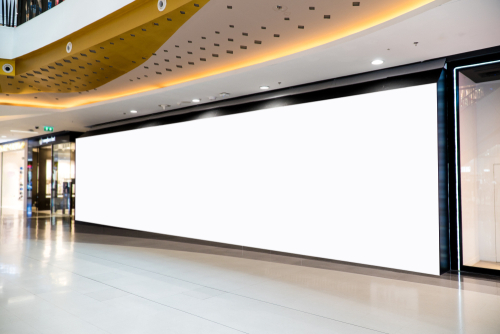How to save money and time on large format displays
By Milenna Miller
Fast, cheap, good… pick any two. This concept is generally presented as a Venn diagram of overlapping circles where any two categories can be combined, but never all three. If you want fast and cheap, you can’t have good. If you want good and cheap, you can’t have fast. It’s also referred to as the “Project Management Triple Constraint” but I prefer the simpler if not entirely accurate title of “Project Triangle.”
When looking at an opportunity, and for the purposes of this exercise, the opportunity is a large format visual solution, the key to eliminating wasted time and effort is to determine at least two project parameters before starting the design. The best two in my opinion are the ones that most greatly affect quality: timeframe and budget. If these two elements can be determined up front, I know what quality I can design and deliver to the customer. Let’s look at some examples.
If the customer has a short timeline and a limited budget, I will be wasting everyone’s time and effort if I design a high-end LED solution. For starters, lead-times on LED are typically much longer than thin-bezel LCD displays and fine pitch LED is more expensive (though the cost delta is shrinking rapidly). So depending on the size, I’ll likely propose an LCD solution using the best displays the budget will allow.
If the customer has a longer timeline and a more generous budget, our options are greatly increased. LED is now an option, as is ultra-thin-bezel LCD. At this point, the solution is governed more by size, content type, and installation conditions. All of which can be addressed carefully because there is time to consider all the variables.
If the customer has a tight timeline and a generous budget, higher quality is still an option, though it may mean expediting shipments or hiring additional resources to meet the installation deadline.
But what if the customer doesn’t really have a budget number in mind, but they want something good and need it fast. (This never happens, right?) Well, now you are working the project triangle from a different side. They want fast and good, which the triangle says won’t be cheap, but you have no idea how much your customer can afford. So, let’s have that conversation up front.
I’m leerier of wasting a potential customer’s time than I am of pressing them on the budget issue. So, even if they haven’t committed dollars for the project, I will work with them to establish a theoretical budget. This gives me a design target and helps manage the customer’s expectations. Now I’m back on the preferred side of the triangle, timeline and budget, and the design quality works itself out.
You won’t always get a budget number, but it’s worth making the effort. If you work the project triangle from the timeline and budget side, you’ll arrive at the best solution for your customer sooner. And quicker closes mean more time to deliver the project.

